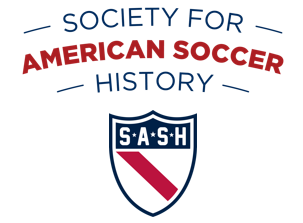The workhorse of the U.S. national team in the 1990s. Jones, who usually played as an attacking or outside midfielder, was never one of the United States’ most dazzlingly skilled players, but his speed and effort made him a fixture in the national team. By the time he retired from the national team in 2004, he was the United States’ all-time leader in caps with 164. He also was second only to Alexi Lalas among American soccer player in the 1990s as a pop icon , thanks in part to his dreadlocks hair style.
Jones, who was a walk-on at UCLA and went on to be a star of the Bruins’ NCAA champion team in 1990, was part of the outstanding group of players who represented the United States in the 1992 Olympics. He made his debut in the full national team in September 1992.
Jones played in all of the United States’ four games at the 1994 World Cup, three of them as a substitute, and every minute of all three U.S. games at the 1998 World Cup, where he was one of the few U.S. players who distinguished himself. His play at that World Cup enabled him to win the Honda Award that year as the outstanding U.S. national team player. By the time of the 2002 World Cup, he was no longer a starter, but played in four of the five games as a substitute. In the qualifying rounds of the 1998 and 2002 World Cups, he appeared in 30 of the United States’ 32 games.
Outside the World Cup, Jones played in 10 of the United States 11 games in its runs to the semifinals at the 1995 Copa America and 1999 Confederations Cup.
After the 1994 World Cup, Jones had brief spells with first-division clubs in Brazil and England before settling with the Los Angeles Galaxy in Major League Soccer. He played for the Galaxy from 1996 to 2007, including teams that won the MLS title in 2002 and 2005, and the U.S. Open Cup in 2001 and 2005. He was named to the MLS post-season Best XI in 1998, and played a total of 351 MLS games.
Inducted in 2011.
